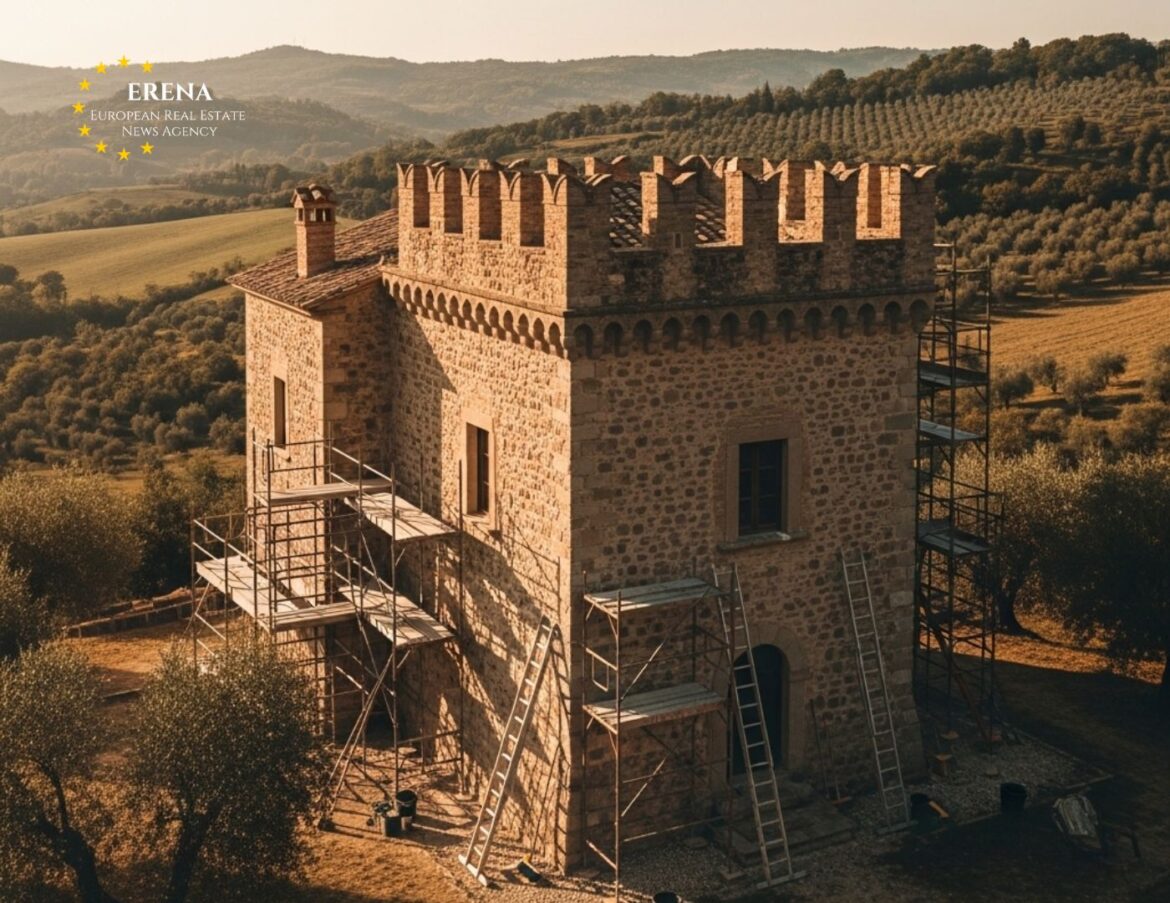In recent years, Italian municipalities have launched eye-catching programs offering abandoned historic properties — including villas, towers, and even castles — for the symbolic price of €1. Originally conceived as a way to revive depopulated towns and save cultural heritage, the initiative has gained global attention and attracted a wide range of buyers: from investors and entrepreneurs to artists and adventurers. But who is truly profiting from this scheme? And who is turning ruins into revenue?
How the €1 Program Works
The basic idea is simple: local governments list historical properties — often in a state of disrepair — for just €1. However, the purchase comes with conditions. The buyer must commit to renovating the property within a specified time frame (usually 2–3 years) and present a plan for how the building will be used — residential, commercial, or cultural.
Dozens of towns across Italy participate in the program, from Sicily to Piedmont. Among the most active are Sambuca, Bivona, Mussomeli, Salemi, Garganico, and Fabriano. Some municipalities have even launched English-language websites to simplify the process for foreign buyers.
Who Is Investing — and Why?
Restoring an ancient Italian structure is not cheap. Costs can range from €30,000 to €300,000 or more, depending on the property’s condition, size, and location. The main investor profiles include:
- Small business owners and restaurateurs who turn castles and villas into boutique hotels, restaurants, wineries, or craft centers. A French couple, for example, bought a crumbling tower in Tuscany for €1 and turned it into a popular wedding venue.
- Creative professionals — architects, designers, artists, and writers — who use the buildings as studios, galleries, or artist residencies. For many, this is both an investment and a passion project.
- Short-term rental operators who restore properties and list them on platforms like Airbnb, generating stable income and attracting international tourists.
- Sustainable development investors who implement eco-friendly technologies, energy-efficient renovations, and green tourism strategies, aligning restoration with environmental values.
Do Local Communities Benefit?
Municipalities hope that restoring these historic sites will attract new residents, boost local economies, and increase tax revenue. Some towns, like Pratola Peligna in Abruzzo, report growing tourism and the reopening of cafés, shops, and markets.
Challenges remain. Not all buyers fulfill their renovation commitments. Some underestimate the financial burden, leading to stalled projects or repossessions by municipalities. This places an administrative strain on local governments.
Nevertheless, successful cases show a win-win situation: investors gain unique assets, while towns regain life and architectural charm.
Notable Success Stories
- Castle in Campania turned into an art center. British artist Beth M. purchased a partially collapsed 18th-century fort and converted it into a cultural venue with workshops, exhibitions, and residencies. The project now generates income through grants and rentals.
- Palazzo in Sicily converted into a boutique hotel. An American couple invested over €200,000 to renovate a property in Mussomeli. Today, the hotel hosts tourists from across Europe and North America, and locals report increased job opportunities.
- A restoration foundation in Lombardy specializes in acquiring and renovating castles for educational and cultural purposes. With support from patrons and public-private partnerships, they turn ruins into learning centers and museums.
Risks and Challenges
While the €1 castle program sounds like a dream, it comes with several pitfalls:
- Red tape. Coordination with heritage preservation agencies can take months or even years.
- Hidden costs. Restoration may require major work on infrastructure, foundations, and compliance with safety regulations.
- Skilled labor shortages. Remote towns often lack qualified contractors, and bringing them in from elsewhere raises costs further.
Who Is Profiting?
Aside from individual property owners who earn income from rentals or resale, several other players benefit:
- Local contractors and architects gain employment and steady business from restoration projects.
- Municipal governments see increased tourism, tax revenues, and positive media attention.
- Regional funds and private investment groups acquire property bundles, aiming to restore and sell for profit over the long term.
- Local businesses — guides, artisans, and restaurants — enjoy higher foot traffic and consumer spending as visitors return.
Future Outlook
Interest in the program remains strong in 2025. Italy’s Ministry of Culture is considering expanding support through EU sustainability grants. A national registry of available properties is also under discussion to streamline participation.
Experts stress the importance of maintaining a balance between commercial exploitation and heritage preservation. Authenticity should not be sacrificed for profit. Respecting local architecture and community needs is key to sustainable success.
Conclusion
Italy’s €1 castles initiative is more than a clever marketing tactic — it’s a holistic development strategy. It channels private investment into historic preservation while breathing new life into forgotten towns. Those who combine architectural passion with financial savvy and respect for history are turning ancient ruins into profitable — and meaningful — ventures.
With its rich history and scenic beauty, Italy remains a prime destination for anyone seeking not just cheap property, but the opportunity to be part of a cultural and economic revival.

